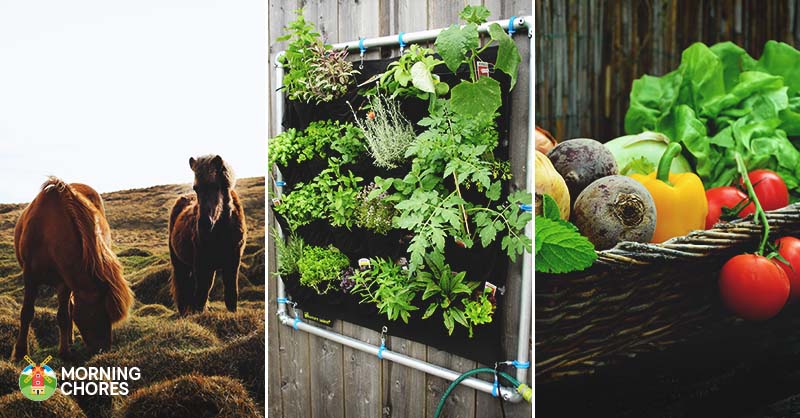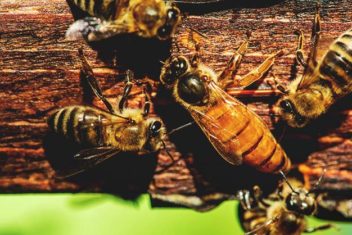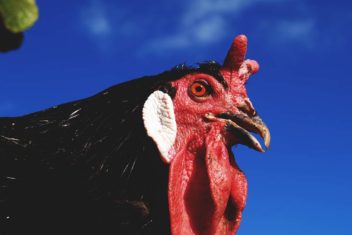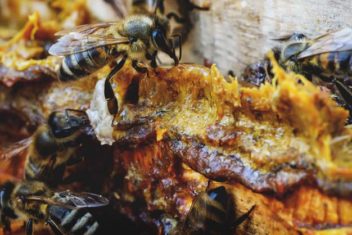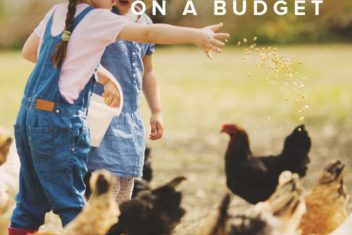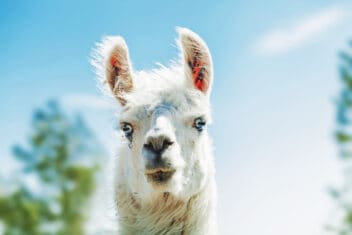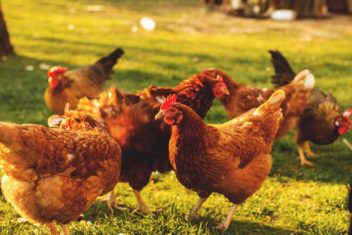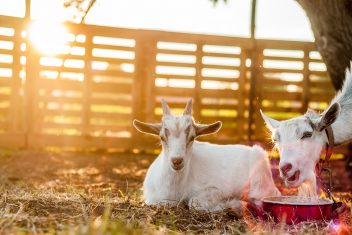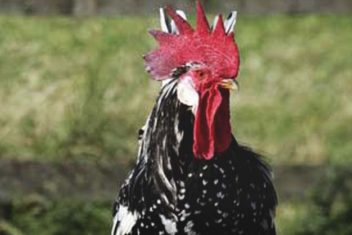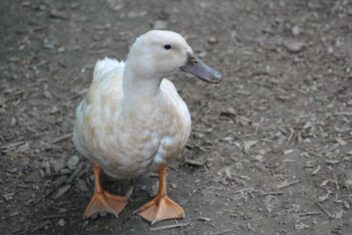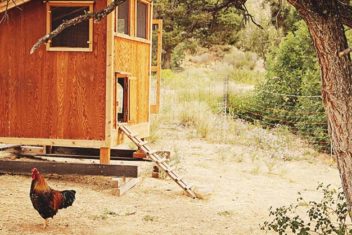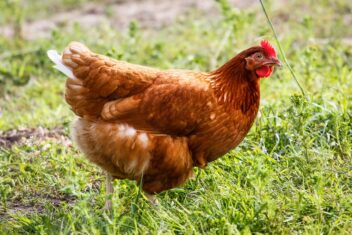Are you on a tight budget and aren’t sure how you are going to feed your livestock?
Or are you just trying to be as self-sufficient as possible and are not satisfied with depending upon your local feed store for your livestock’s wellbeing?
Well, either way, you’ll want to tune in because I’m going to share with you some ideas on how you can provide food for your livestock.
Then you’ll be working on your self-sufficiency and improving your budget simultaneously.
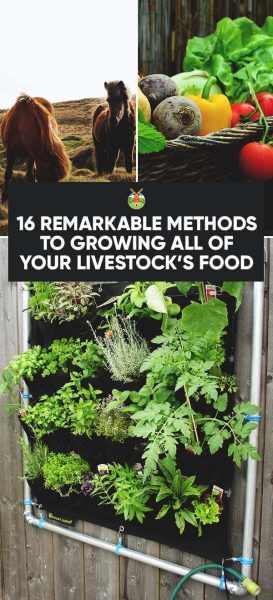
How to grow all your livestock food
1. Out to Pasture

My Pasture
The first option is probably one of the most obvious options for producing your own feed. If you have any excess land what so ever, then you should fence it in and let your animals munch. We all probably raise different varieties of livestock.
However, if you have livestock such as cows, horses, or goats, then put up an electric fence and let them keep that area of your yard mowed down while they stay full.
But if you have smaller livestock, like rabbits, then you’ll probably need to place them in a rabbit tractor and move them around that area.
Either way, it will keep your pasture mowed down and your animals full at no added cost to you.
2. Free Bird
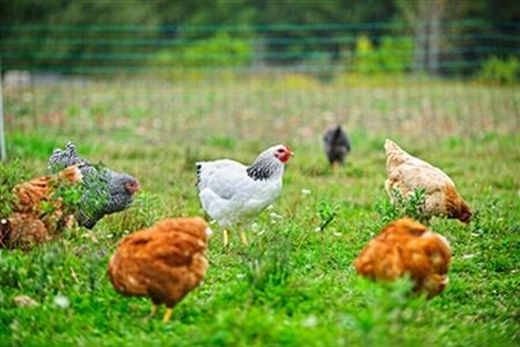
via Raising Free Range Chickens
This is probably the second most obvious option. If you have birds, then you could always let them free range.
Yes, there are added risks to free ranging birds. They are more susceptible to predators.
However, I’ve recently moved to a larger homestead and have allowed my birds to begin free ranging. In doing so, I’ve learned that they are really smart. They know when a predator is around, and they usually go hide before I ever even notice that there was a problem nearby.
So if you are looking to feed your animals in a more self-sufficient and frugal manner, then allowing them to hunt for their food is a good option. Chickens enjoy pecking and hunting for food.
But I do leave food available in my chickens’ coop and also am sure to close them up at night so they aren’t attacked while they are sleeping.
3. Fodder is Your Friend
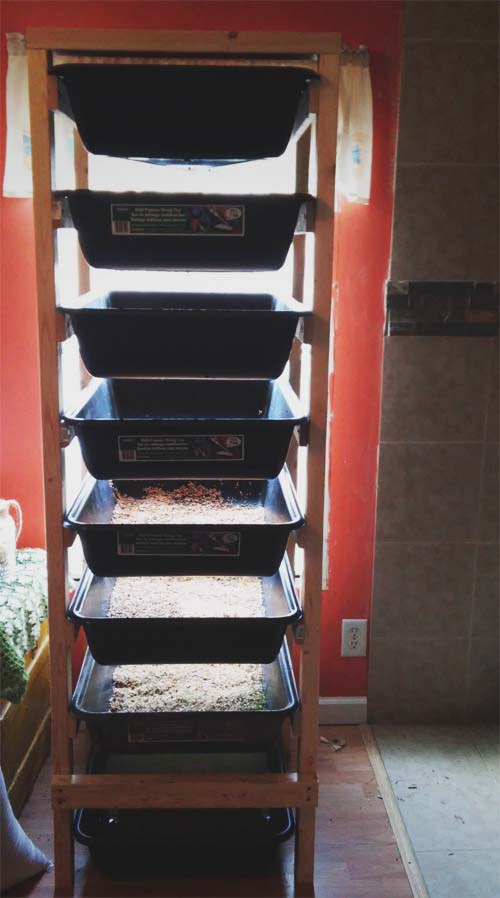
Fodder is a great way to raise food for your animals and not spend a ton of money. You have two options when raising fodder.
First, if you want to go completely self-sufficient, then you’ll need to purchase wheat seed that you can plant in your garden over the winter. It will protect your soil over the winter months, and you’ll have a bunch of wheat berries after the fact.
Second, you can just continuously purchase wheat seed from a local feed mill at a very low price. In my area, I can purchase a 50-pound bag for about $7.
Either way, you can use that wheat seed to turn it into about 400 pounds of food. We have used it to feed our rabbits, goats, ducks, chickens, and pigs. They all seemed to love it and it saved us a ton of money at the feed store.
So if you are interested in raising fodder, here is our tutorial on how you can do that.
4. A Second Garden
If you have the room, then you can grow a garden for yourself and then a garden for your livestock. All livestock love fresh vegetables and fruits.
So if you have the room, then just plant an extra garden for them. This will mean two times the work, but it is worth it to know how much you are saving.
Also, if you grow enough, you could freeze it so your animals would still have vegetables and fruit to munch on over the winter too.
5. A Whole Lot of Herbs
We discovered that our chickens love herbs, and they are great for them too.
So when you plant your herb garden, why not plant extra for your animals too? You can feed them fresh every day, or you could dry or freeze some herbs so they could enjoy them over the cooler months too.
Obviously, this will promote better health for your animals, support a more self-sufficient lifestyle, and save you a lot of money as well.
Plus, you could grow an indoor herb garden for your animals during the winter if you’d prefer to only feed them fresh herbs.
6. Excess Fruits and Veggies
Do you have a lot of excess fruits and vegetables during your main growing seasons? I know I hit a certain point where I’ve canned so much of certain items that I don’t even want to look at them anymore.
Well, those are great times to take those foods that you are sick of canning and turn them into food for your livestock.
So you could feed them directly, or you could preserve them so they could be enjoyed over the winter months too. It is up to you.
But the next time you have any excess fruits or vegetables, don’t le them go to waste. Turn them into a wholesome natural feed for your livestock.
7. Grow Vertically
You may think that all of this sounds great if you have the room, but what about homesteaders that do so in their backyard?
Well, I’ve been there until recently. I know you have to maximize every inch of space you have available. Which is why I recommend vertical gardening.
If you are able to grow things up, then you’ll be able to fit more items on your property. This could include having more room to grow more vegetables, fruits, and herbs for your livestock.
So if you need some ideas on how you can create your own vertical gardens that are less expensive, then you should check out our article on that.
8. Container Gardening
When we lived on a smaller homestead, I did a lot of container gardening. It allowed me to grow more food in a more condensed fashion.
So when it came to my animals, and I knew I needed to grow more of their food in order to save money, I would always put certain foods in containers.
For example, I always had great luck with growing carrots in containers. I’d grow a bunch of different containers of them to feed them to our rabbits year-round.
Granted, rabbits need a variety of foods, but this was one way to help stretch the other foods a little bit further.
So if you are working with limited space, but would like to grow more food to help stretch that feed budget more, then growing items in containers could be a great way to do that.
9. Dried Sunflowers
I love growing sunflowers. They are super easy to grow and have a lot of great benefits.
For instance, we began growing sunflowers as shade for our chickens. They grew marvelously next to the chicken coop because of their poop and provided a great amount of natural shade for our birds.
Then when the season was done, we’d cut the heads off of the sunflowers, hang them upside down, and use them as rabbit and chicken feed during the winter. They loved it because rabbits and chickens both love oiled sunflower seeds.
But normally, I can’t afford to feed them sunflower seeds because of how high the price is for them in our area. Growing sunflowers and drying them is a great way to give them what they like without a ton of added expense.
10. Worm Farming
Worm farming is something we’ve spoken about before here on Morning Chores. It is because it is so simple, but also a great protein source for your birds.
So if you have chickens, ducks, quail, or any other type of bird, then you may want to consider raising your own worms. You can raise either mealworms or red worms. They like both, and they are both fairly inexpensive to try.
If you are interested in starting a worm farm, then you should read this article. If you are interested in raising mealworms for your birds, then you should read this article.
11. Hay, Hay, Hay
Hay is another inexpensive item that you can feed your animals. Livestock such as rabbits, goats, cows, horses, and donkeys enjoy a lot of hay. It is pertinent to their diet as it provides their fiber. If you have rabbits and don’t feed them hay, they can actually die because their bowels will become blocked.
So obviously hay is a big deal on a homestead.
But what do you do if you don’t have pasture?
Well, you can usually purchase hay from a local farmer for very little money. But if you are on a tight budget or trying to be more self-sufficient, then that might not work for you.
So if you have any extra land, you can simply let it grow up. Then you can cut it yourself, or allow your animals to graze in that area. It is whatever would work best for your particular situation.
12. High Protein Snacks
If you raise birds, then you know that protein is a big deal when it comes to them laying a good amount of eggs.
So you’ll need to consider some high protein snacks. This can come in the form of layer feed, but that is expensive at times.
Which is why we created this list for high protein alternatives. Hopefully, this will help you figure out a few ways that you can substitute with other protein options, and they won’t break the bank at the same time.
13. Table Scraps
Do you have table scraps from time to time? If so, then don’t toss them. Don’t even bypass your animals and put them in the compost. The reason is that your animals will create compost for you, but your table scraps will feed them at no extra cost to you.
So the next time that you fix vegetables and have excess pieces of the vegetable cut off, don’t throw them away. Place them in a compost bucket to feed to your animals.
Or if you have left-overs from dinner, don’t toss them out. Instead, just give them to your animals. They will love them.
14. Cold Frames
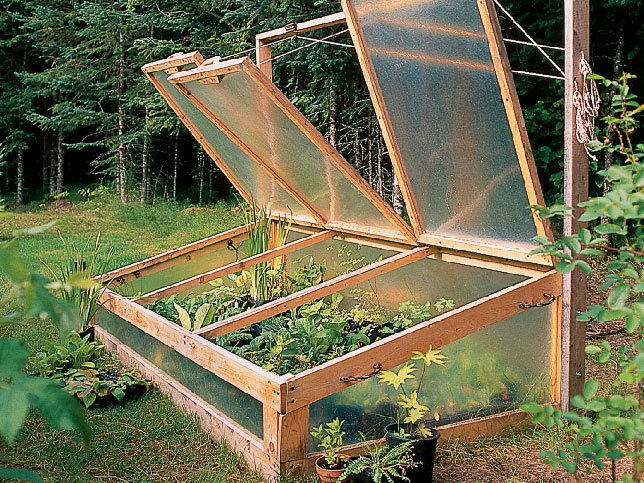
via Sunset
Cold frame greenhouses are great because you can grow heartier vegetables in the cooler months, and they don’t require any energy to power them.
So if you have a cold frame greenhouse, then use it to produce excess food for your animals. But if your cold frame greenhouse is full of food for your family, then you should consider creating smaller cold frames for your animals.
Then they’d have plenty of food growing most of the year. This should help you save some money on feed.
15. Lawn Scraps
Lawn scraps are a great option as a feed alternative because almost everyone has them. If you mow your yard, then you should attach a bag to the back of your mower to catch the scraps.
Then, you just toss them to your animals. They will absolutely love them! This works for smaller animals, like chickens and rabbits.
Or you can use it for larger livestock, like goats.
So the next time you mow your grass don’t discard the scraps. Use them to feed your animals.
16. Brush
My final suggestion for feed alternatives that you can grow yourself is brush. If you have land, then you’ll most likely have brush from time to time.
So if you trim a tree, cut trees down, or prune bushes don’t discard the scraps.
Instead, use them to feed your animals. This is aimed (probably) more at goats because they love brush. But if you have them, then utilize the brush that you have to keep them full and happy. While also giving your wallet a break.
Well, you now have 16 options to produce your own feed for your livestock. Hopefully, some of the ideas will work for your current situation and save you money while also making you more self-sufficient.
But I’d like to know what you use to produce your own feed for your livestock?
We love hearing from you so please leave us a comment in the space provided below.

